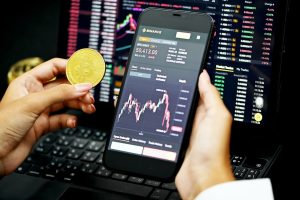The foreign exchange market, also known as forex, is the largest and most liquid financial market in the world. Forex trading involves the buying and selling of currencies, with the aim of making a profit from fluctuations in exchange rates. The daily turnover in the forex market is immense, with trillions of dollars changing hands every day. In this article, we will explore how much money changes hands every day in forex, and what factors drive this activity.
According to the Bank for International Settlements (BIS), the daily turnover in the forex market is around $6.6 trillion. This figure is based on data from the 2019 Triennial Central Bank Survey, which covers the global foreign exchange market. The survey found that the average daily turnover in the forex market had increased by 29% since the previous survey in 2016, indicating the growing popularity of forex trading.
The forex market operates 24 hours a day, five days a week, across different time zones. This means that trading activity is continuous, with different regions of the world trading at different times. The highest trading activity is usually seen during the overlap of the Asian, European, and North American sessions. During these times, market participants from different regions are active, leading to high liquidity and volatility.
The forex market is dominated by institutional players such as banks, hedge funds, and other financial institutions. These players account for a significant portion of the daily turnover in the forex market, with the rest being made up of retail traders and other smaller players. The institutional players are responsible for a large part of the trading activity in the forex market, as they engage in large volume trades and have access to advanced trading tools and platforms.
The forex market is driven by a variety of factors, including economic data releases, geopolitical events, and central bank policies. Economic data releases such as GDP, inflation, and employment figures can have a significant impact on currency prices, as they provide insights into the health of an economy. Geopolitical events such as elections, trade disputes, and natural disasters can also impact currency prices, as they affect the perception of a country’s economic stability.
Central bank policies are another important driver of forex market activity. Central banks use monetary policy tools such as interest rates and quantitative easing to influence economic growth and inflation. Changes in these policies can have a significant impact on currency prices, as they affect the demand for a currency. For example, if a central bank raises interest rates, it can make a currency more attractive to investors, leading to an increase in demand and a rise in price.
In conclusion, the forex market is a massive and complex financial market that sees trillions of dollars changing hands every day. The daily turnover in the forex market is driven by a variety of factors, including economic data releases, geopolitical events, and central bank policies. The market is dominated by institutional players, but retail traders and smaller players also contribute to the trading activity. Despite its complexity, the forex market provides opportunities for traders to profit from fluctuations in exchange rates, making it a popular choice for investors around the world.






